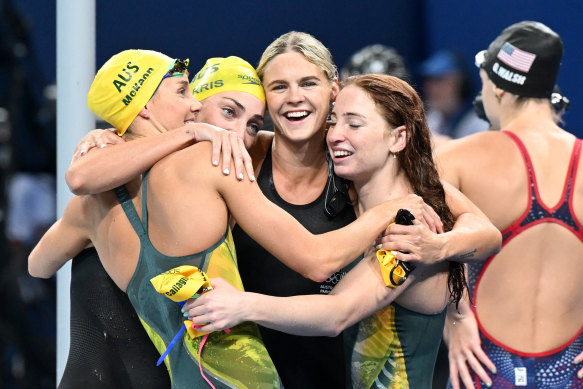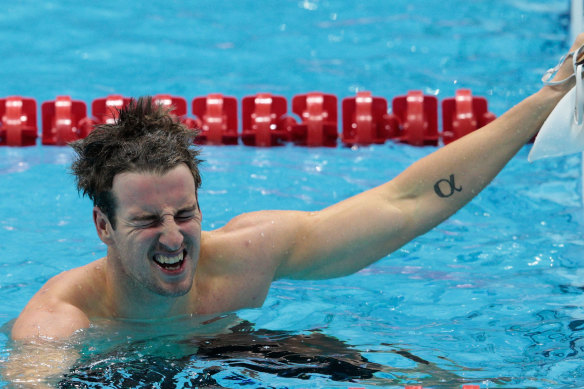Sport’s push for board equality is laudable, but athletes must come first
By Darren Kane
The new National Gender Equality in Sport Governance Policy, announced this week by the federal government, mandates that within the next three years, not less than half of all directors of each of Australia’s national sports organisations (NSOs) must be either females, or gender diverse people.
The policy also demands that at least half of the chairpersons of all the 60 or more NSOs be women or gender diverse individuals. Which at first blush seems desperately unenforceable against any particular organisation.
As with many government announcements, further details are sketchy, yet adherence is slated to be a mandatory condition for securing future government funding. In particular, no explanation is put forward as to why this is a good idea, let alone required.
But why not? Women make up half the population, give or take. Australia’s female athletes perform better than their male counterparts if Olympic and Paralympic medal tables serve as the barometer. So why not enshrine seats at the boardroom tables?
But exactly what rationale underpins this new government policy? Are these requirements sensible and reasonable, or tokenistic?
It’d be fair to assume that half of the customers of Australia’s biggest four banks are women. And yet banks aren’t correspondingly mandated as to their corporate governance and a requirement for female directors. But banks are the artifice of the devil, according to the Banking Royal Commission’s final report published in 2019. If not banks, then why sport?

Australia’s female athletes led the way at Paris 2024, starting in the pool.Credit: dpa/picture alliance via Getty Images
Australia’s Commonwealth of Australia Constitution Act 1900; the country’s core governing document, likewise doesn’t say anything about gender protections for parliamentarians.
Further, there are also no mandatory rules, requiring public companies listed on the Australian Stock Exchange to have appointed a minimum percentage of female directors or senior executives. Yes, the ASX sets some guidelines, and yes, the ASX also regularly measures listed companies’ diversity disclosures. However, there are no cast-iron statutory, listing or other requirements for public companies to take particular steps. And it is worth noting that with those recommendations, the top 100 companies all have at least two female directors and about 40 per cent of board positions are also held by women.
As to sport though, that’s a peculiar beast. Article 16 of the Olympic Charter establishes the criteria for the IOC membership, and the membership and various Commissions.
There can be a maximum of 115 IOC members; there’s no requirement in the Charter, that any minimum number be of a specific gender. Article 19 deals with the IOC’s Executive Committee; again, no gender rules at all. But to be fair, more than 40 per cent of IOC members are female. During the past decade, the IOC has doubled female representation among the IOC’s members and taken definite steps to do just that.

Australia’s disappointing returns at London 2012 became a flashpoint for sports funding.Credit: Getty
As to the international federations and to use two examples, the constitution of World Aquatics (which I had a hand in writing in 2022) only compels that there be at least 13 females appointed to a 40-person governing bureau. The constitution of the International Weightlifting Federation, which I wrote in 2021 but which has since been altered, only guarantees that there will be seven women on a 27-person ruling executive.
After Australia’s lacklustre performance at the 2012 Olympics, the federal government and the Australian Sports Commission implemented the first iteration of mandatory sports governance principles for sports bodies.
The objective being to ensure public money was being used effectively and properly. The ASC rightly identified good corporate governance and administration as fundamental preconditions to qualifying for government funding; all Olympic sport NSOs would rot on the vine without government money.
So no more personal fiefdoms or kitchen table sports administration. What is mandated by the ASC has evolved during the past 12 years, including in relation to gender composition on boards.
For example, Swimming Australia’s constitution already states that people of no single gender can constitute more than 60 per cent of the total number of directors. Many other NSO constitutions contain similar provisions. The constitution of the Australian Weightlifting Federation mandates zilch, but nonetheless a significant number of its directors are women. Blanket gender quotas in corporate governance is a vexed issue.
Almost 20 years ago, Norway introduced laws requiring public and state-owned companies to have at least 40 per cent women directors; the Nordic sky hasn’t exactly fallen in sideways any time since. Other European jurisdictions, including Spain and Belgium, have followed suit to some extent. Again, no catastrophes.
Doubling-down, from the start of this year the Norwegian mandate was broadened, to apply to almost all private companies, partnerships and foundations. Basically, every company of any significance in Norway must have at least 40 per cent female directors.
But such policies are inherently anti-meritocratic, and exist as fodder for the proposition that some appointments lack legitimacy. Dangling financial carrots (or wielding sticks) as a reward, for compliance with gender quotas, is actually tantamount to motivation by coercion.
I’m not a woman. But if you’re a talented and accomplished woman who’s also a potential director, I believe you’d want to be selected based on your qualifications, experience and experience; not be because of your gender.

The sky hasn’t exactly fallen in Norway since the Scandinavian nation moved to board quotas. Quite the opposite, in a sporting sense.Credit: Getty Images
Sports such as swimming, cycling and athletics are demonstrably prominent in terms of athlete representation in Paralympic competition; and yet none of the corresponding NSOs constitutionally mandate that their corporate boards include former Paralympic athletes, or people with a lived experience of all that it takes to be an elite, Paralympic athlete.
So what is the actual problem which is sought to be solved by requiring that NSOs have a pure gender balance at board level? Is the intention to provide more opportunities for women in leadership? Laudable idea, but invariably, NSO directors aren’t paid.
Or is the policy underpinned by the idea that having an equal number of women or gender diverse people on boards will result in more excellent high-performance, pathway and grassroots structures and systems for athletes, of all genders? For if sports’ governing bodies aren’t managed for the athletes, and with their best interests at the epicentre, then frankly the organisation should be detonated.
The evidence that compelling NSOs to have half of their board seats filled by female directors will have any direct impact for athletes doesn’t exactly leap off the page. Certainly not when the threatened stick is to punish the athletes by withholding NSO money should their national organisations not comply.
If the best eight candidates to fill eight board seats of an NSO’s boardroom are women, then the board should be comprised of those women. It’s that simple.
Sports news, results and expert commentary. Sign up for our Sport newsletter.